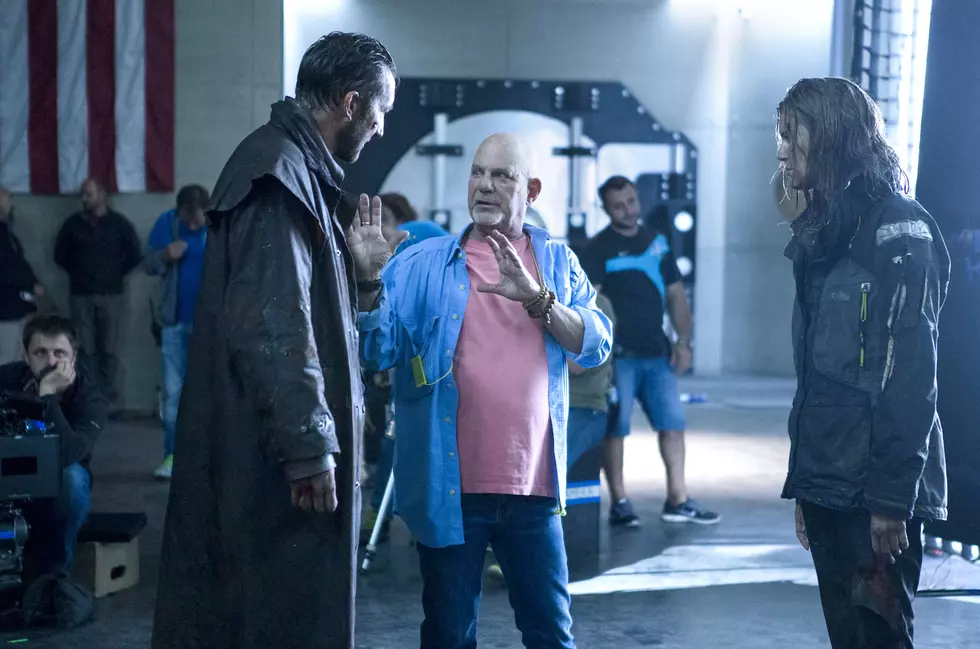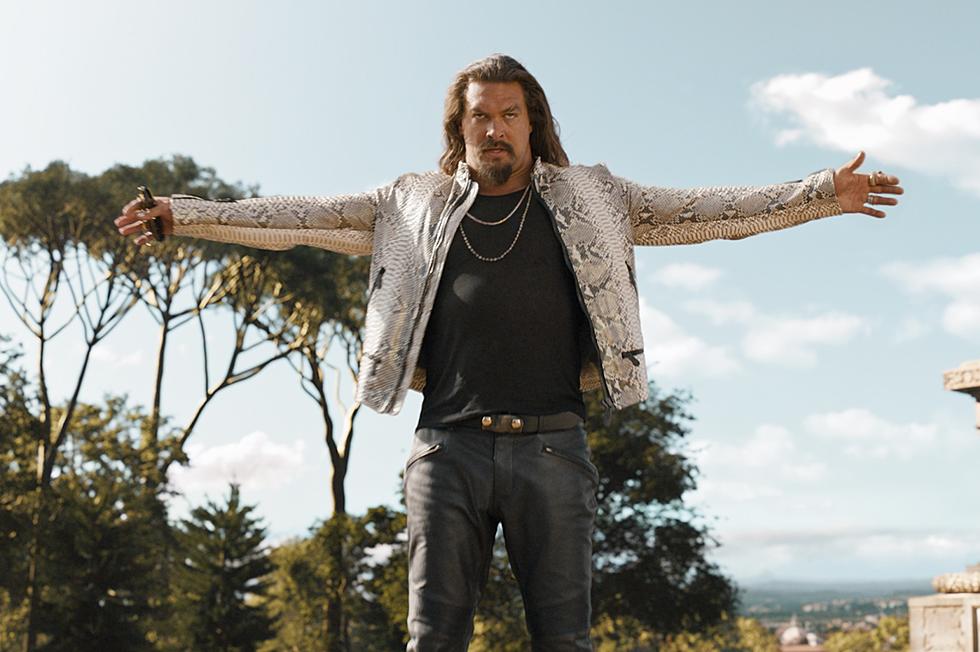
Rob Cohen on ‘The Hurricane Heist’ and a Possible Return to ‘Fast & Furious’
As a filmmaker, Rob Cohen has shifted gears more times than Vin Diesel in a quarter-mile street race. He got his first break in Hollywood over 40 years ago, when he discovered the screenplay to The Sting, an eventual Oscar Best Picture winner, while working as a script reader for Mike Medavoy. Then he moved into producing, first in television and in film; without him we might not have pictures like The Wiz and The Bingo Long Traveling All-Stars & Motor Kings. Then Cohen moved into directing, mostly action pictures, like Dragonheart, Daylight, and a little movie you’ve probably heard of called The Fast & the Furious.
That project, begun as a humble picture about Los Angeles street racers, eventually morphed into one of the biggest franchises in history. Cohen’s Fast, like most of his action movies, had a warm and convivial relationship with the absurd, and that association continues in his latest effort, The Hurricane Heist. Essentially a high-concept blend of Twister and Die Hard, the film follows a group of crooks who try to rob the U.S. Mint in the midst of a Category 5 hurricane with only a weatherman (Toby Kebbell) and a Treasury agent (Maggie Grace) — and one of the worst storms in history — to stop them. Madness, chases, and outlandish stunts (like Toby Kebbell throwing hubcaps like ninja stars!) ensue.
I talked to Cohen on the phone about The Hurricane Heist’s excellent title, the film’s wildest moments, and, for some reason, Western civilization’s long oral storytelling tradition. We also discussed what he thinks of the Fast franchise now that it has mutated into a globetrotting spectacular, and if he’d ever consider a return to the series.
First of all, I’ve read that the original title of the movie was Category 5. So I want to know who came up with the title The Hurricane Heist, which is so much better.
Well, it was me and Byron Allen, who owns Entertainment Studios, who’s releasing the movie. He called me one day and said “I don’t really like the title Category 5, because I don’t want it to seem like a natural disaster movie, because it’s more than that. So I want to call it The Category 5 Heist.”
And I said, “Y’know, that’s kind of a clunky title. And I don’t even know if you get the idea from that, because not everybody knows about the categories [of hurricanes].” I said to him “I always loved when we retitled Redline to The Fast and the Furious, because I loved the alliteration; fast and furious. So I said, “Why don’t we call it The Hurricane Heist?” Hurricane, heist, h and h, it has a little more ring to it. And he goes “Done!”
Interesting; I’ve never heard of this idea about alliterative titles before. Is that the secret to good movie titles?
I think there is a love of alliteration in language, maybe because in our long oral tradition everything was memorized. Poetry had to rhyme or had a set meter that helped the teller remember the whole thing. And I think one of the reasons we like and remember certain poetic lines whether it’s “The better angels of our nature” there’s something about the long ‘a’ — angels and nature — that resonates with us. Because we’re musical creatures, and words spoken or written are music in some ways.
All our great orators; Kennedy, even Adlai Stevenson, certainly not the man in the White House now who sounds like he never took an English class ... but you feel that these men come up with these things. Franklin Roosevelt, Churchill. “We will fight them on the beaches!” and so on. This use of repetitive sounds and words. So I do think there is something to that.
You’ve made a few heist films in your career. What, in your mind, are the essential elements of a good heist film?
Well, having the heroes or villains, depending on whether it’s Ocean’s 11 or Hurricane Heist, you have to have some cool relationship among them and you have to set the bar at something that has to be worth doing. It has to be enough money, gold bars, rare diamonds, or whatever the goal is. Then it has to have a certain technical difficulty that isn’t just about shooting and killing people.
And then I think what makes it good, whether it’s Spike Lee’s Inside Man or whatever, it has to have some twist, where things go wrong. Then you watch the villains under pressure to salvage a heist that looks so well planned, but of course there’s always the factor of the unknown, whether it be Bruce Willis just happening to be in the building when Alan Rickman takes it over in Die Hard or in [Inside Man] it’s about hiding in plain sight.
There’s always this thing of the unknown element that you can’t predict that makes the heist complicated. In this case, they thought they were going to do this under the cover of a Category 2 hurricane and it turns into a Category 5 and they’re up against the fact that the vault security codes have been changed. That whole thing where things go wrong in the perfect plan. People like that idea because we know that all perfect plans are vulnerable to the unexpected. It’s sort of the nature of life that we can plan the perfect picnic, but it might rain. Or it’s the perfect picnic, but the two-year-old got a bee sting and had to be rushed to the emergency room. It’s always the unexpected that derails our master plan. As my mother used to say “Man plans and God laughs.”
The plot of the film hinges on this big vault of cash. This might be a stupid question, but I’m watching the movie, looking at these huge piles of what looks like real money and I wondered: Is it ever dicey making fake money for a movie? Counterfeiting is a crime. Do you have to worry about who gets near that money? Do you deliberately make it look slightly unreal on purpose?
Yes, you’re absolutely right. You can get in a lot of trouble. Now we were in Bulgaria, so we were a little away from the eyes of the FBI and the Treasury Department.
[laughs]
But I made all that money, individually by hand. My team did; we got a bunch of artists from Sofia to do nothing but make fake money. The key is this is used money. I wanted it to look used, not to look like newspaper cut up. There are scenes where you’re really close to the money, and you can see the stacks and they’re all uneven. All the bills look like they’ve been handled. The Treasury does in fact filter out the old money and destroy it all the time. But until it’s destroyed it’s still legal tender. So that was the gimmick. It’s a victimless crime when they steal money that was going to be shredded and turned into confetti. It seems like a low-risk crime. But of course it goes out of control.
If I had to pick my favorite moment in the movie, it’d probably be when Toby Kebbell uses what I think are hubcaps...
Yes!
And he throws them into hurricane-force winds and they basically become ninja stars?
Yeah!
I was just wondering how that idea came about. Was it in the script? I thought that was hilarious.
We were thinking of different ways a hurricane could be weaponized to level the playing field for our heroes. It was in the script, we wrote it in the script. I’m trying to remember who actually thought of it. It all merges over the two years we took to make it. But it was in the screenplay and it always seemed like a fabulous new idea; something fresh, something you haven’t seen before.
We did experiment with it. I had this bank of 100 miles per hour fans and we got out there and started throwing those things. You know when you see it catch the wind, and how it accelerates when Toby throws it?
Yes.
That’s real! That’s not a visual effect. That’s what happens when you throw a hubcap into a 100 miles per hour wind, let alone a 150 miles per hour wind!
So he’s actually throwing hubcaps on the set?
In that case, it’s heavy plastic. But we did it with real metal ones and it was so dangerous. That’s why I put in the shot where it hits the parking meter and dents it. That’s what happened on the set that day when we tested it before we shot it. I threw a metal one and like a frisbee it curved and it hit one of those meters on the set, and it put a dent in the metal column. I went “I think we’re on firm ground with this idea. I don’t think we have to test anymore.”
Wow. So much of the movie is shot like that, with hurricane-force rain and winds. Is shooting under those conditions as bad as it looks or worse than it looks?
It’s as bad as it looks. The other factor that you don’t get is the noise level of all this equipment, all the blowers that are blowing debris and the smoke machines that run on diesel engines, and the 100 miles per hour fans, the banks of those. The noise was deafening. A hurricane sound, which is also loud and horrible, is pleasant compared to what it was like day after day on that set.
It was intense, and as Toby and Ryan [Kwanten] are always kidding, you do a Rob Cohen film there’s no acting required because you come to the set and you’re struggling for your own survival. [laughs]
It does lend the film a certain authenticity.
When we did the flood scene, we dumped 44,000 gallons of water within a few seconds on those stuntmen and it blew them all out of the set. It was scary. But the power of that much water is hard to describe.
It definitely had its edginess make it. But the results are on the screen, and we came back with no serious injuries whatsoever ... I really wanted the actors to do their own stunts, and other than that flood dump, that’s really Toby and Ryan jumping from truck to truck, and running on the trucks, and hanging off the trucks. All the stunts you see that look like the actors are actually the actors.
I was actually going to ask about that truck scene, because you can see Toby and Ryan running on these trucks, or at least it certainly looks like them running on these trucks. I wanted to hear about shooting that stuff because there’s some spectacular shots in there.
Yeah, thank you. My two tenets to begin with were the storm is shot in front of the lens, not in special effects later, not in CGI, as much as possible, and that we figure out ways to rig the stunts so the actors can actually do them. We got very lucky in casting Toby and Ryan and Maggie because they were all game. If I told Maggie to jump over this wall and come up shooting, Maggie would jump over the wall and come up shooting. If I told Toby “We’re gonna rig this thing, you’re gonna get hit by a tower and you’re gonna let go and you’ll be cabled but you’re gonna be 40 or 50 in the air with all the wind and everything on you and you gotta fight your way back up the line,” it was always “Sure Coach. Send me in.” They were all gung-ho to do it.
That stunt you see with Ryan when he comes off the tow truck and he almost misses the bumper, that’s a take. That’s the whole take, no cuts, no face replacement, no substitution of a double. That’s actually Ryan and that’s a stunt that almost went wrong. He grabbed Toby’s leg, which is what saved him. The vehicle behind him had a driver in it, what we call a blind driver, and he would have braked immediately. But you don’t want to faceplant an actor on a highway going 50 miles an hour.
Probably not. That sequence with the trucks you’re describing did remind me a little of the famous truck scenes from the original Fast & Furious. What do you think when you look at that franchise now, and you consider how big it’s gotten?
The franchise went from a Los Angeles story built around a family of multicultural brothers and sisters to what I’ll call “pure spectacle.” The beauty is that the audience has ridden along with it for these 18 years. I’m very proud that the characters I created in 2001 are still in the lexicon. There‘s still a Dominic Toretto appearing every two years, or a Mia Toretto, or a Letty. It had to evolve, and it evolved in a way that was ultra-worldwide commercial. And the heartbeat of it is: We live in a world with no gravity, cars can do anything. They can burst out of the nose of airplanes. People can jump across freeways. They can take down helicopters. It’s like, “Okay, anything for the spectacle.”
They spend $350 million on these movies, so they’ve got the money to pull this stuff off. And the audience is eating it up. The last one still did $1.25 billion. For my kids’ college fund, I’m very happy that it’s had this longevity.
I started out to do a different thing, but the thing that I did implanted this world and these characters deeply in that audience. And they’re still coming for a hit of it. And most of the time when you go on the internet and [read] “Which was the best Fast & Furious?” It’s almost always mine.
Could you see yourself going back to direct another one?
I always wished Universal would come back to me to direct the last one.
If they ever make a last one.
If Comcast’s Board of Directors ever allows them to end the goose that laid the golden egg. [laughs]
The Hurricane Heist opens in theaters this Friday, March 9.
Gallery - The Greatest Action Movie Posters In History:
More From ScreenCrush









